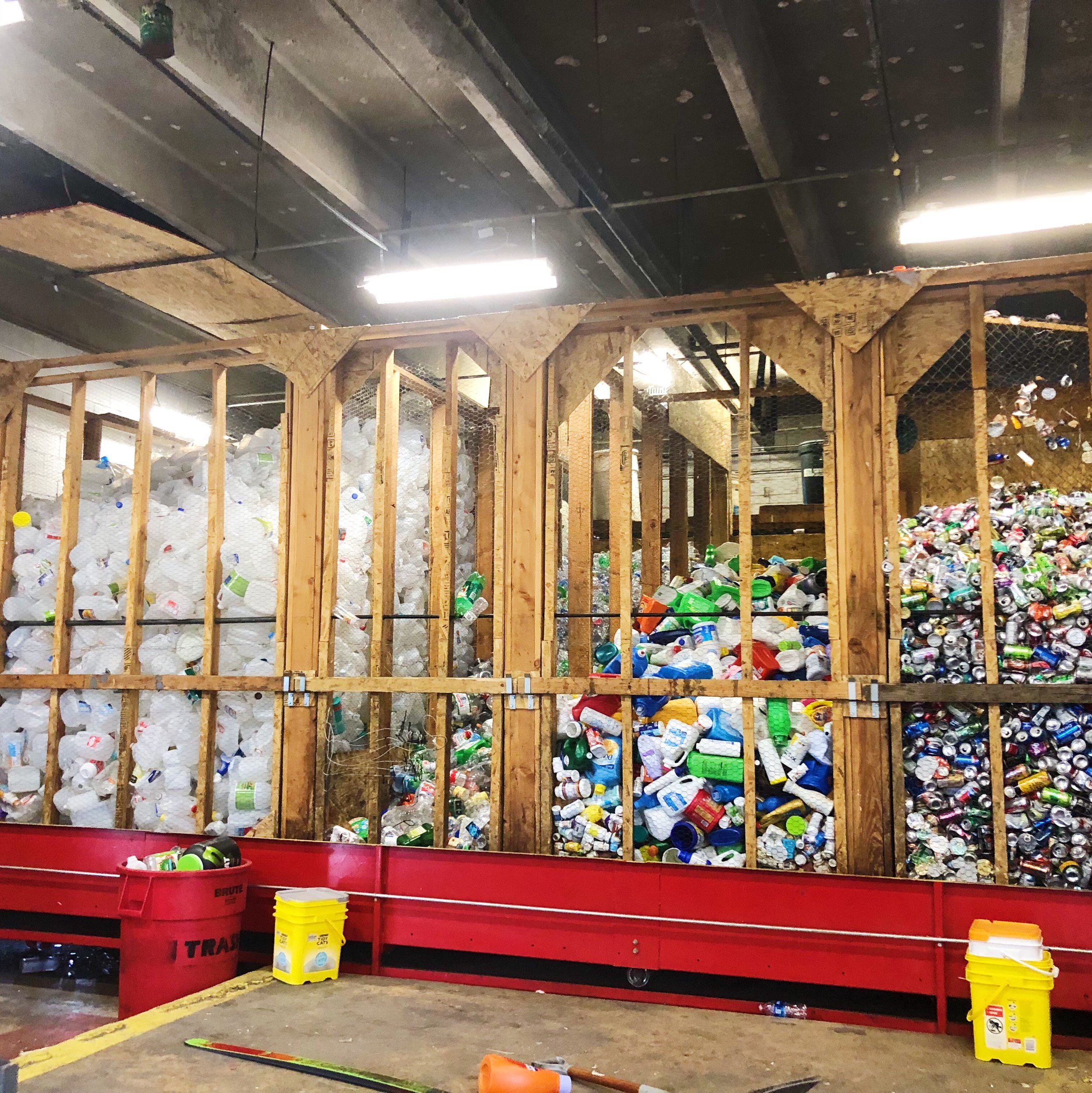Touring a Rural Recycling Initiative
Welcome to Grand Junction, CO! Today we’re touring a rural recycling initiative 😍
Curbside Recycling Indefinitely (CRI) has been in operation since 1992. CRI offers customers two different ways to recycle: curbside pick-up 2x / month & a free public drop-off. They have 3 sorting lines, 2 magnetic sorters, 1 blower, 6 forklifts, 2 balers & 7 residential collection units, and they staff 14 FTEs. Most of the equipment you see in these photos are custom-made or rigged together, since there’s not a lot of technology available for low-volume recycling sorting.
Their business model is typical for a small recycling facility:
A monthly subscription fee to their curbside clients ($1.75 / month / customer. CRI has 3,000 curbside customers. You do the math 😱)
Sales of material (variable, and 60% of that sale goes to the City of Grand Junction for lease of their property)
Grants for facility improvement and equipment
CRI collected 2,268 Tons of recyclables last year (#s from 2016-2017):
All paper grades (773 Tons)
OCC cardboard (740 Tons)
Glass (560 Tons)
Plastics #1, 2, 5 (114 Tons)
Steel (65 Tons)
Aluminum (16 Tons)
CRI is pretty advanced for a small-town recycling program, but it’s still a good example of what recycling looks like outside of most major US cities. Grand Junction isn’t exactly what you’d call rural, but in the recycling world, basically anything outside of major metropolitan cities is considered ‘rural.’ This is because recycling only exists as a viable business when there is a market for the material collected and if cities subsidize it (usually). The further away a town has to ship their material to a place that will buy it, the higher the operating costs. Most towns in the US do not have access to curbside recycling because it just doesn’t make economic sense.
As a rural recycling program, Curbside Recycling Indefinitely’s lack of volume is their biggest challenge.
As a recycling facility, there are really only two ways to make 💸💸:
1: Service fees that the customer pays for curbside service: Large recycling companies (ie Waste Management) bid for multi-year contracts with a city. The bid is typically awarded to the company that can keep recycling fees the lowest to the customer. The only way service fees can make up a portion of revenue for recycling companies is through volume. CRI makes approx $6K / month from their service fees ($1.75 / mo / customer) - definitely not enough to keep the lights on.
2: Selling the material the facility collects: Every recycling facility has a list of processing plants or mills where they sell material. Material value changes every day based on unstable market conditions & vendor volatility. Commodity value is highest for clean, well-sorted material, requiring expensive sorting technology or ⬆️ labor.
Major overhead costs for small recycling programs include:
Freight. It’s your responsibility to get the material to the buyer. Ex: CRI has 3 mills to sell mixed paper. Salt Lake City, 300 miles away; Twin Falls, 500 miles away; & Sacramento, 900 miles away. It’s a complex logistics web & sometimes costs outweigh revenue.
Storage. Notice how the baled paper looks rotten in this photo? That’s because CRI was forced to sit on a bunch of their collected paper after one of their mills closed & they couldn’t ship it. CRI didn’t have enough storage space to put the paper inside, which meant that it got wet & will go to landfill.
Staffing. Most recycling facility technology was developed in the 60s to process mixed paper and phone books. 😜 Sorting technology is changing to better sort current materials, but smaller recyclers can’t always afford to invest AND honestly, even the best modern tech can only hope for a contamination level of 20%. For perspective: China has banned all recyclable imports with contamination higher than .5%. Clean & well-sorted usually requires man-power.



